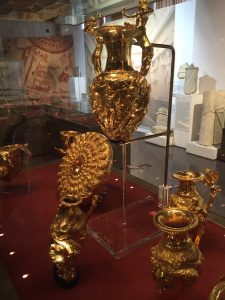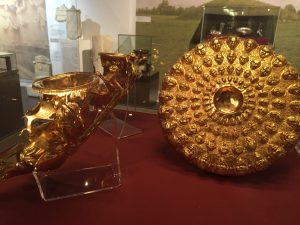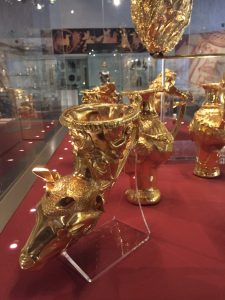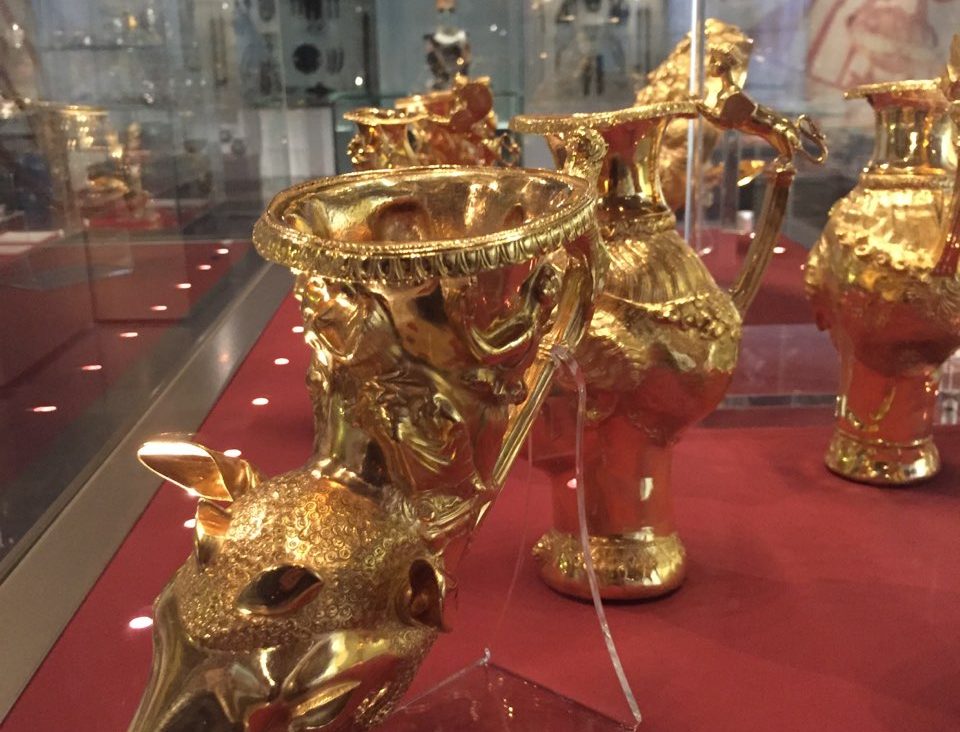The golden treasure from Panagyurishte was found in 1949 two kilometers to the south of the town of Panagyurishte. It is dated back to the end of the 4th and the beginning of the 3rd century BC.
The treasure consists of a beautiful set with rich decorations and ornaments. Its total weight is 6.164 kg of 24-karat gold and is thought to have been used as a royal ceremonial set by the Thracian king Seuthes III. As one of the best known surviving artifacts of Thracian culture, the treasure has been displayed at various museums around the world. When not on a tour, the treasure is the centerpiece of the Thracian art collection of the National Museum of History in Sofia. Exact replica can be seen in the History Museum of Panagyurishte.
The set most probably served for the drinking of wine in a religious, celebratory or domestic atmosphere. There is also an opinion that its purpose was the ritual purification of a liquid, which could be wine. It is supposed that another two rhytons with the front part of animals, an amphora and one or two phials are missing, with a view of the sacral importance of the number three in the Thracian religion.
Three of the seven rhytons are shaped as animals’ heads, one is the front part of a goat, three have women’s (Amazon) heads. On one of the rhyta are depicted god Dionysus with Ariadne (a Cretan princess) on the feast on the occasion of their wedding. Three of the vessels are jugs with Amazon heads. Their handles are formed as mythological creatures with animal figures and human heads.
Most interesting regarding its form and decoration is the big amphora. Its handles are formed as fighting centaurs, and the two openings for pouring the wine, located at the bottom end of the vessel, represent Negro heads. Between the Negro heads is the figure of the child Heracles, fighting the snake. The amphora is richly decorated with realistic scenes from the Greek mythology.
A skillfully made shallow bowl, called phiale, is also found. There are four concentric circles on it, with 24 relief ornaments in each circle, which become smaller from the rim to the centre of the phiale. The phial of the Panagyurishte Treasure weighs 846 g and has a diameter of 25 cm – the largest and heaviest phial of the Antique world.





